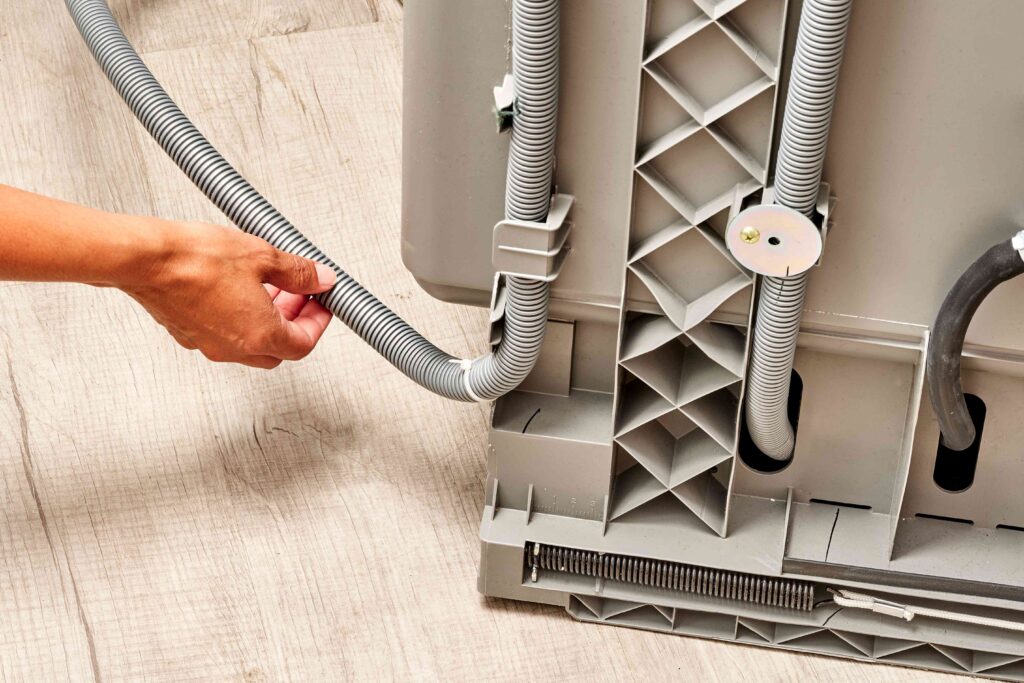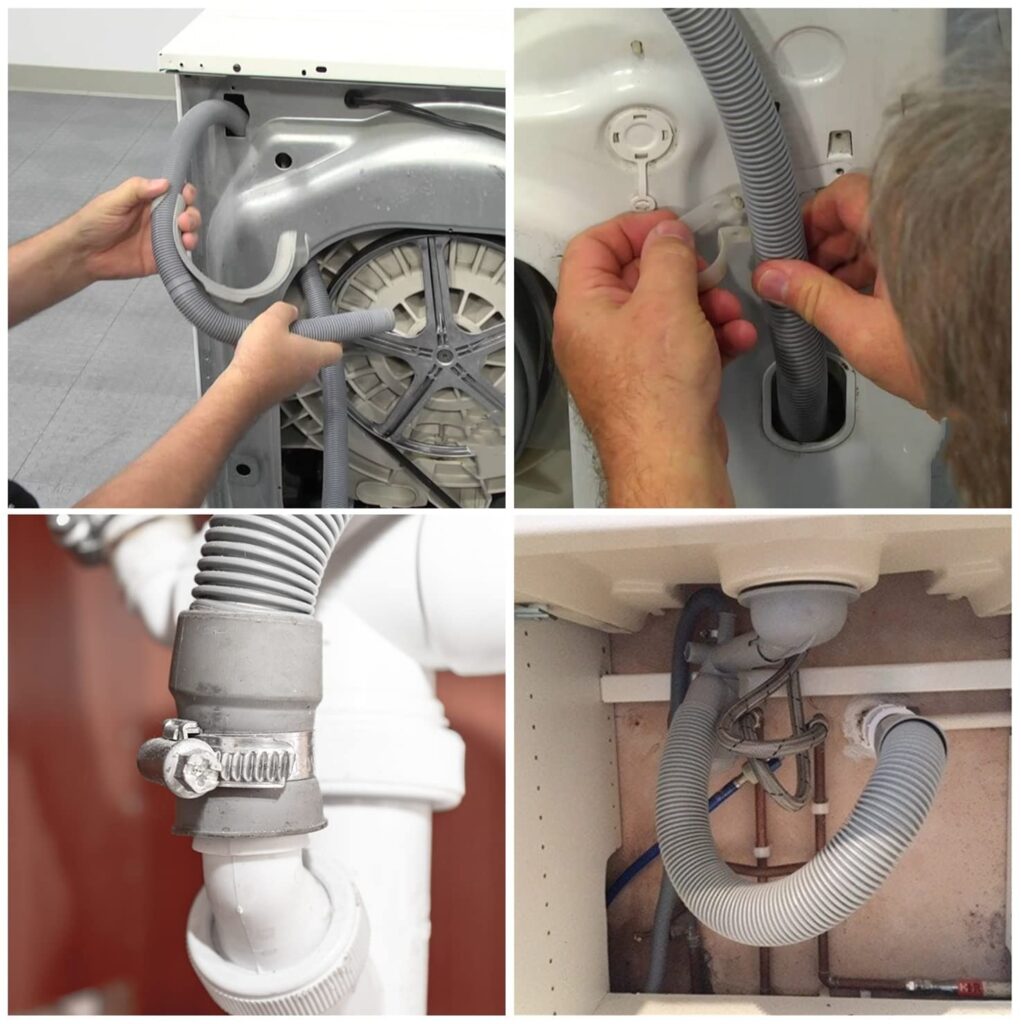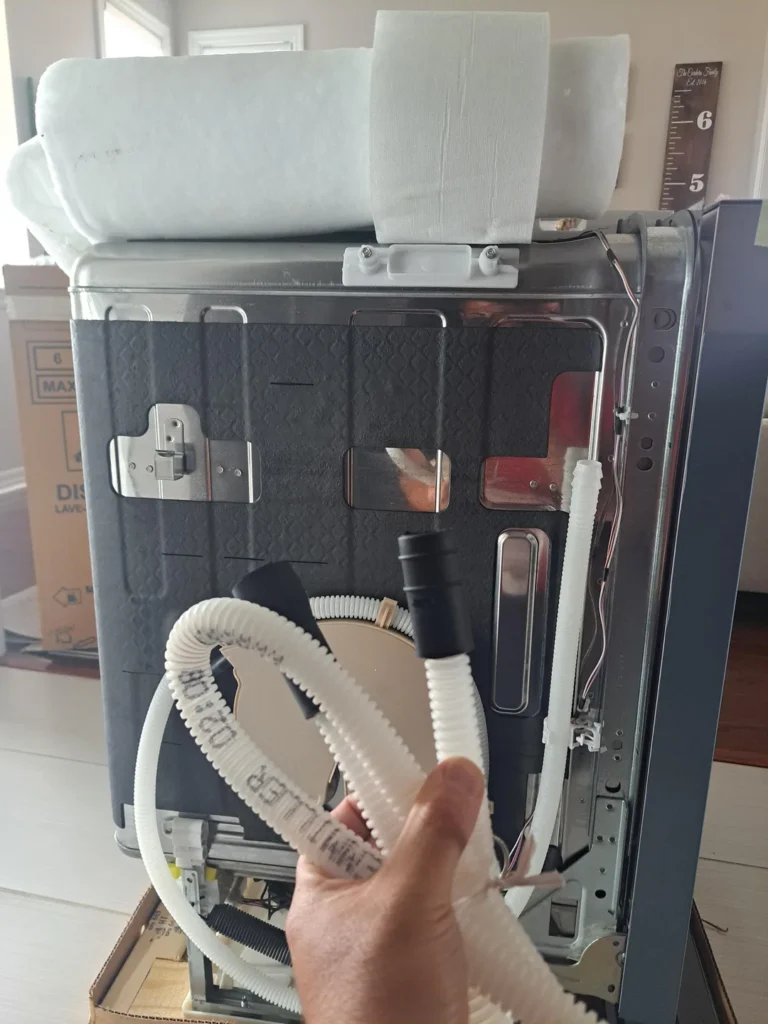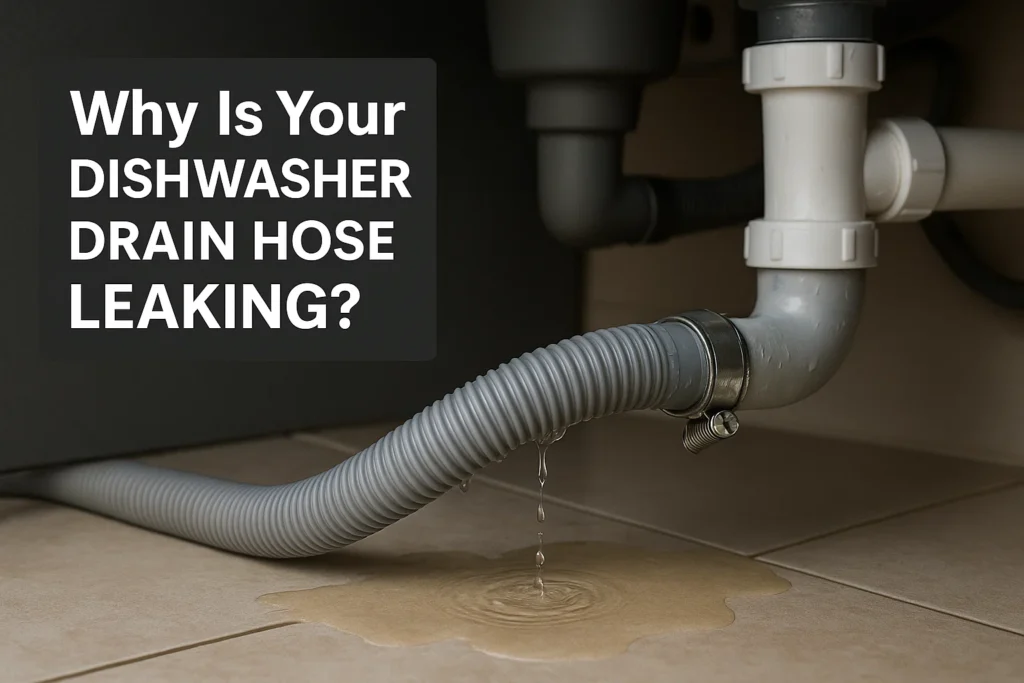A leaking drain hose often starts with a faint puddle or a sour smell and escalates into cabinet damage. The hose carries wastewater from the dishwasher to your sink drain or disposer; cracks, loose clamps, or clogs send that water where it doesn’t belong. If you need hands-on help in NYC, book a New York dishwasher repair service.
How to Tell If the Drain Hose Is the Problem
- Water shows up under the unit after a cycle (not during fill).
- The cabinet base under the sink is damp where the hose meets the drain/disposer.
- You notice a musty odor or dark water trails along the hose route.
- The machine throws drain-related error codes.
- Tilting the unit slightly reveals drips near hose joints.
Want a deeper checklist? See this dishwasher leaking water troubleshooting guide.
Common Reasons a Dishwasher Leaking Drain Hose Becomes an Issue
- Loose or worn clamps at the pump/air gap/disposer
- Cracked, brittle, or pinholed hose (age/heat/abrasion)
- Kinks that trap water and force seepage at fittings
- Missing high loop or air gap, causing backflow pressure
- Disposer knockout not removed on new installs
- Grease/food sludge clogging the line

What to Do If Your Dishwasher Drain Hose Is Leaking
- Cut power at the breaker or unplug.
- Shut off the water supply to the dishwasher.
- Mop standing water to protect flooring.
- Inspect the hose path behind the toe-kick and under the sink.
- Snug loose clamps; replace any rusted or weak ones.
- If the hose is cracked, plan on replacement.
Step-by-Step Inspection Guide
- Remove the toe-kick panel (usually two screws).
- With a flashlight, find the drain pump outlet and hose.
- Briefly run a drain-only cycle while observing joints.
- Check the upper connection at the sink/air gap/disposer.
- Look for drips, mineral streaks, or damp insulation.
- Replace the hose if it’s stiff, sticky, bulged, or flattened.
Tools You’ll Need to Repair or Replace the Hose
- Nut driver or 1/4″ socket
- Flathead/Phillips screwdrivers
- Pliers (for spring clamps)
- Towels and a small tray/bucket
- Stainless worm-gear clamps
- Model-correct drain hose
When to Repair vs. When to Replace a Leaking Drain Hose
- Repair if the hose is sound and only a clamp is weeping.
- Replace if you see cracks, soft spots, bulges, or repeat leaks.
- For older units (7–10+ years), proactive hose replacement is cheap insurance.
How to Replace a Dishwasher Drain Hose
It’s a tight workspace, but doable with patience. Pull the unit forward a few inches, protect the floor, and expect a small amount of water during removal.

Choosing the Right Replacement Drain Hose for Your Dishwasher
- Match the exact model number on the door frame.
- Prefer OEM or a high-quality aftermarket hose with proper diameter/molded ends.
- Ensure enough length for a smooth route and a proper high loop (or an air gap).
- Choose heat-resistant, reinforced material for high-temp cycles.
Step-by-Step Guide to Drain Hose Replacement
- Disconnect power and water; slide the dishwasher forward slightly.
- Remove the lower panel; locate the drain pump outlet.
- Loosen the pump-side clamp; twist the old hose free (catch residual water).
- Under the sink, loosen the clamp at the air gap/disposer; detach the hose.
- Route the new hose along the original path—no sharp bends or edges.
- Create a high loop by securing the hose under the countertop (~20″ above floor) if no air gap is present.
- Clamp both ends snugly; avoid crushing the hose.
- Check for kinks; reassemble panels.
- Test with a rinse/drain cycle while observing all joints.
How to Prevent a Dishwasher Drain Hose from Leaking Again
- Maintain a proper high loop or install an air gap to reduce backflow.
- Don’t cram bins under the sink that press on the hose.
- Replace weak spring clamps with stainless worm-gear types.
- Run periodic hot washes with an approved cleaner to reduce sludge.
Maintenance Tips to Avoid Future Leaks
- Clean the filter monthly.
- Flush the disposer before each cycle.
- Do an annual flashlight check behind the toe-kick.
- Document early leaks in rentals to prevent damage disputes.
Installation Mistakes That Often Lead to a Dishwasher Leaking Drain Hose
- Forgetting to remove the disposer knockout on new installations
- No high loop/air gap, leading to siphoning and overflow
- Over-tightened clamps cutting into the hose
- Hose too short/long, creating tension or sagging traps
- Routing across sharp cabinet cutouts without a grommet
Need more root-cause tips? Here’s how to fix a leaking dishwasher step-by-step.

Best Practices for Proper Setup and Hose Care
- Keep bends gentle (2–3″ radius); avoid 90° kinks.
- Support long runs with clips/straps.
- Use stainless hardware; tighten firmly but not to the point of deformation.
- Verify drain height per the manufacturer’s spec.
- After any work, always run a wet test—don’t rely on a dry fit.
When to Call a Professional
- Water reaches electrical parts or trips the breaker.
- Multiple leak points or soaked insulation.
- Persistent draining faults after basic fixes.
- Limited access or flooring that makes moving the unit risky.
- Prefer a warranty-backed repair? Schedule professional dishwasher hose replacement in NYC.
Signs the Leak May Be Part of a Bigger Problem
- Standing water in the tub (pump/check valve issue).
- Backflow into the sink during drain (air gap/venting).
- New hose still leaks (pump seal, tub seam, inlet valve).
- Notable cabinet/subfloor damage—act quickly to limit repairs.
